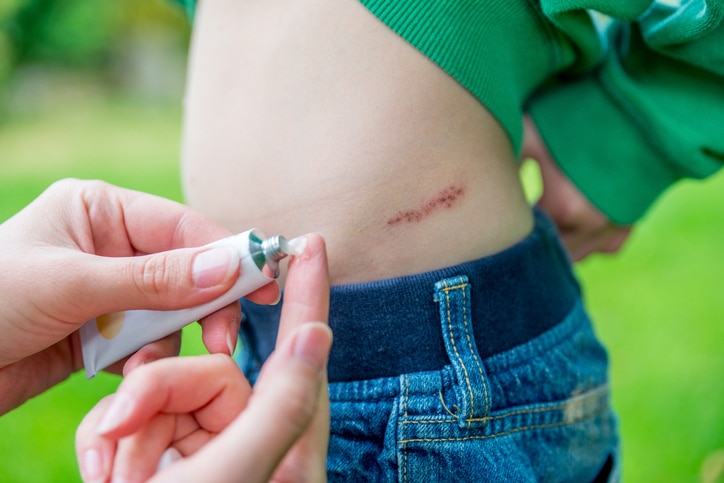
Scar treatment has come a long way in recent years. With advancements in technology, we now have the right tools to minimize scarring, starting with right after a wound is experienced. It used to be you were stuck with a scar, because there was nothing you could really do about it.
Today, creams, lotions, gels, and surgeries exist to ensure a cut, burn, or other injury doesn’t always have to spell life-long scarring. The science of wound healing has had a long and varied history over the ages. Since caveman times, man has been tending to his wounds. In fact, wound care has gone through many iterations and beliefs about what works and what doesn’t, from magical incantations, potions, and ointments, to systematic wound care and surgery in ancient times, according to the National Institutes of Health.
Just take a look back at Sushruta in Ancient India, where healing of wounds was a great area of concern for Chinese, Korean, Egyptian, and African healers, with scars a result of frequent battles and wars. Ayurvedic medicinal plants were the main healing agents of wounds back then, such as banyan, Vilfa stellate, Indian madder, and aloe vera (which is still a main healing component in moisturizers today).
The Greek physician and surgeon Hippocrates, known as the father of medicine, poured vinegar on wounds to irrigate them, followed by wrapping dressings around them to prevent further injury and scarring. Plinio used mineral remedies such as lead and silver, while Galen tried spice ointments.
Once the 19th century rolled around, there were big advances in wound treatment. Hand washing prior to care, in addition to instrument sterilization and wearing of gloves, masks and gowns, was embraced in the 1880s. World War I saw a whole new category of wounds due to advanced weaponry and contamination in the trenches. This is when antibiotics such as Penicillin were first used.
Today, we see common treatments for wounds and scars that include:
- Over-the-counter or prescription creams, ointments, or gels
- Aloe vera, which has long been known to improve wound healing, treating a variety of small cuts, abrasions, skin irritations, and mild burns.
- Surgical removal or treatment: these can be used to treat deeper scars and include skin grafts, excision, laser surgery, or dermabrasion.
- Steroid injections, best for keloid or hypertrophic scars.
- Scarfade, a topical treatment medically proven to reduce scarring. It comprises a silicone scar gel that assists the body in slowing down collagen production to result in reduced appearance of scars. Ideal for treatment of cuts, burns, surgical incisions, sports injuries and injuries arising from car accidents.
We recommend keeping a tube or two handy and use it as directed if you have experienced a recent wound.
